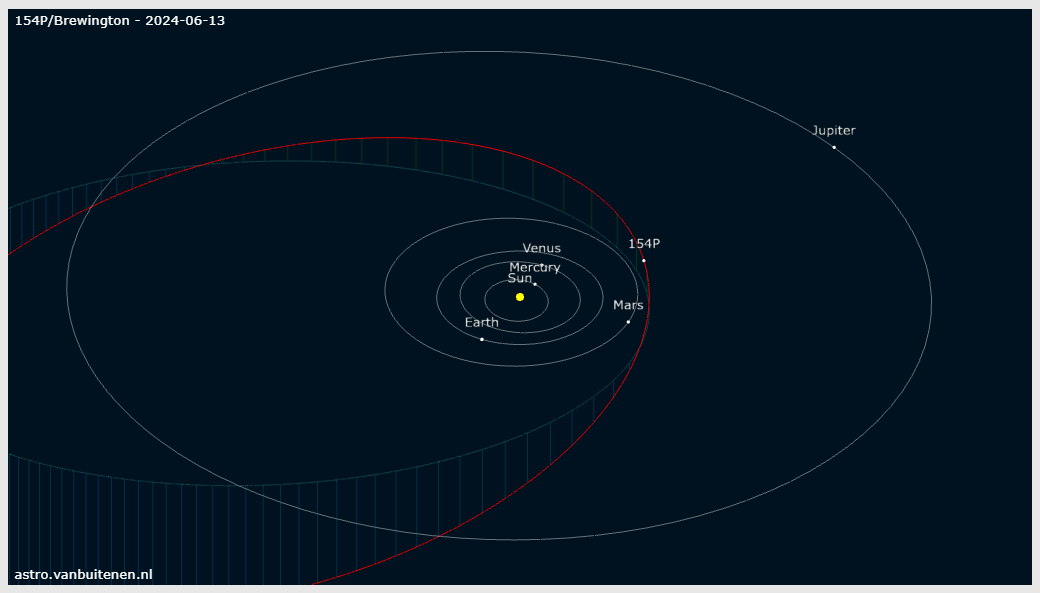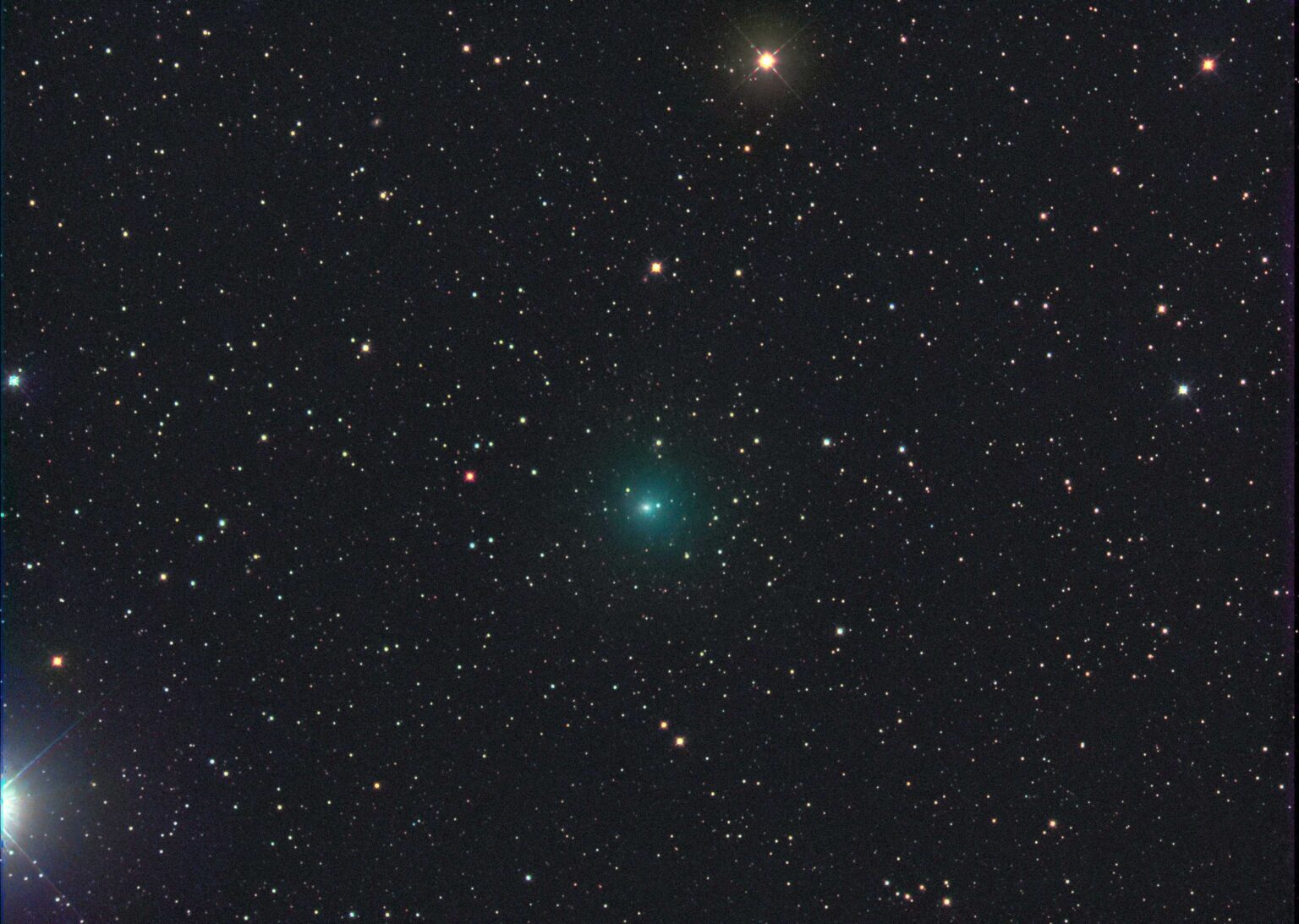According to some media reports, June 13, short-period comet Brewington (154p / Brewington) should pass perihelion, that is, to approach the minimum possible distance to the Sun. Can we see it? Strangely enough, there is no clear answer to this question yet: only one observatory was able to obtain an image of this object in its current appearance, but it is not enough for far-reaching conclusions. Maybe one of our readers can help? Let’s try to figure out how to do it.
American amateur astronomer Howard Brewington discovered his fourth comet on August 28, 1992, using a 40-centimeter telescope. He described it as “a very small blurry object of 10th magnitude.” In a month, the head of the International Bureau for Astronomical Telegrams Brian Marsden calculated its orbit with an orbital period around the Sun 10.72 years and perihelion distance of 1.608 A.U., meaning that the new celestial body could not go inside the orbit of Mars. As the aphelion of comet Brewington is located near Saturn’s orbit, some sources place it in the Saturn family.

The new comet was observed until March 1993, when its apparent brilliance dropped to nearly 20th magnitude. Clarified orbital elements, calculated on the basis of an extended series of observations, allowed to predict the circumstances of its next return with the passage of perihelion on February 18, 2003. Thanks to these calculations 154p / Brewington was successfully rediscovered on August 26, 2002, by a group of Uruguayan astronomers from the Molinos Observatory. It was described as a 16.8 ᵐ diffuse object with a coma of 20 angular minutes in diameter and central condensation. Its maximum brightness in 2003 was expected to reach 10.5 ᵐ, but it did not actually exceed 11.5 ᵐ.
The next appearance of comet Brewington was more successful in 2013, when it passed perihelion on December 12. In late October and the first half of November, some observers reported a brilliance above 10th magnitude. In general, to appear in the conditions of the best visibility from Earth (in opposition near perihelion), this celestial body should be maximally close to the Sun in September–October, but since its discovery, this has not yet become so, and this year the situation is close to the opposite. When approaching the inner regions of the Solar System, 154p / Brewington was in the sky near our daylight for a long time, and only in early June, the first “fresh” observation appeared, where its brightness was estimated at 15-16ᵐ, which is clearly insufficient for amateur instruments. By the end of summer, the conditions of visibility of the comet will not significantly improve due to its approach to Earth, and then it will become weaker, and by winter, it will become impossible even for quite large telescopes.

But it cannot be excluded that the apparent brilliance of comet Brewington will be a little higher than expected, and it will be possible to try to photograph it at least with instruments of “caliber” 20-25 cm. In any case, it’s worth searching the part of the sky where this celestial body is at the appropriate time (now the comet is visible in the predawn sky), looking for a small faint nebula with a brighter center part. Actual information about its calculated position can be found at https://astro.vanbuitenen.nl/comet/154
Recall that now the Sun is approaching the periodic comet Olbers, which can be seen in small telescopes.


